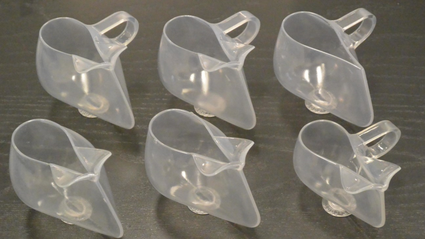The mug or cup uses “capillary action” to keep the liquid inside at all times.
With this method, astronauts can drink water, juice or coffee in a much more natural way. NASA image.
life aboard the International Space Station it is very different from how we experience it on Earth. NASA astronauts have shown us on many occasions how they perform their routines when there is no gravity, and activities as seemingly simple as dressing or sleeping require a very important prior preparation. One of the most impressive phenomena is to witness how liquids behave when there is no gravity to push them towards the ground, so working with fluids is a challenge that The NASA have had to deal with for many years.
There is a very famous video of the legendary astronaut Chris Hadfield manipulating a wet towel, while explaining how workers aboard the ISS cleaned up and washed their hands. the human being use water dailyand in addition to being an essential element for hygiene, it is something that literally we need to survive. So, if the liquid ends up floating when it is in zero gravity…how do astronauts drink?
Drinking from a traditional cup is not very functional in space, since the liquid would rise up to form a sphere, and would float forever. The space agency’s solution was to design containers that achieve keep fluids contained within, and from that idea the “Space Cup” was born. Instead of relying on gravity, as our Earth-based containers do, the space cup uses the combined effects of surface tension, wetting and geometry of the cup. That combination allows astronauts to pour contents inside without fear of it flying away. In this demonstration video, astronaut Nicole Mann shows us how it works.
This is how astronauts drink on board the ISS
This is how astronauts drink on board the ISS
The cup works with what NASA calls “capillary action”, which is in charge of keeping the liquid inside at all times. When astronauts put their lips over the opening, they can access the liquid and drink as if it were a traditional cup.
Until a few years ago, astronauts drank using straws and small sealed containers, but NASA believes that its experiment with “Space Cup” it also provides a more natural drinking experience. So he explains it on his website:
The goals of the tests are to demonstrate cup geometries that exploit capillary forces, allowing crew members to ingest a variety of aqueous beverages in space, from simple fluids like water and juice, to more complex fluids like cocoa, coffee and fruit shakes. And above all, the cups are also expected to be attractive to the crew members.


